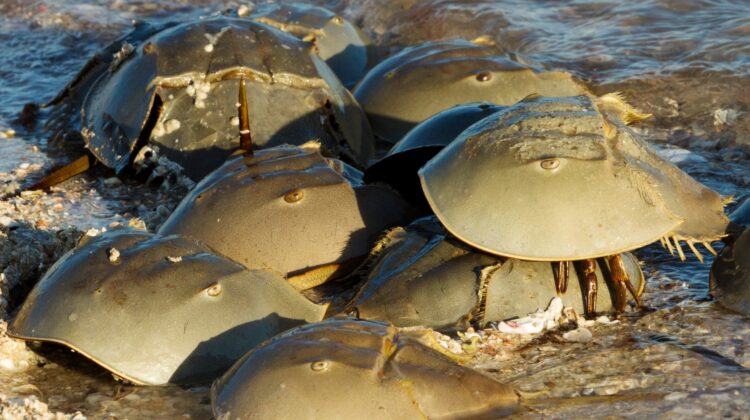
Horseshoe crabs are fascinating creatures that have been around for millions of years, and despite their armored appearance, they have a surprising ability – they can see. Horseshoe crabs have ten eyes, which are located in different parts of their body.
The most prominent eyes of horseshoe crabs are their compound eyes, which are located on the prosoma, the front part of their body. These compound eyes are large, and they provide horseshoe crabs with a broad field of vision. They can detect changes in light and movement, allowing the horseshoe crabs to spot potential predators or prey. The compound eyes also help the horseshoe crabs navigate through their environment, allowing them to avoid obstacles and find food.
But horseshoe crabs’ vision isn’t limited to their compound eyes. They also have “photo receptors” in other areas of their body, primarily along their tail. These photo receptors are tiny sensors that detect light and send signals to the horseshoe crab’s brain, allowing it to detect changes in light levels and movement behind them. This ability is especially important for horseshoe crabs when they are digging in the sand, as they need to be able to detect predators approaching from behind.
The horseshoe crab’s unique eyesight has helped it survive for millions of years. Their compound eyes and photo receptors have allowed them to navigate through their environment, avoid predators, and find food. And while they may seem like strange and ancient creatures, their ability to see has undoubtedly contributed to their longevity and success as a species.
It’s worth noting that horseshoe crabs are also important to humans. Their blue blood contains a substance called Limulus amebocyte lysate (LAL), which is used in the medical industry to test for bacterial contamination in vaccines and other medical products. Despite their importance, horseshoe crabs are facing threats from habitat loss and overfishing, so it’s important to protect these fascinating creatures and their unique abilities, including their impressive eyesight.

amazing creatures never ever heard about them before this